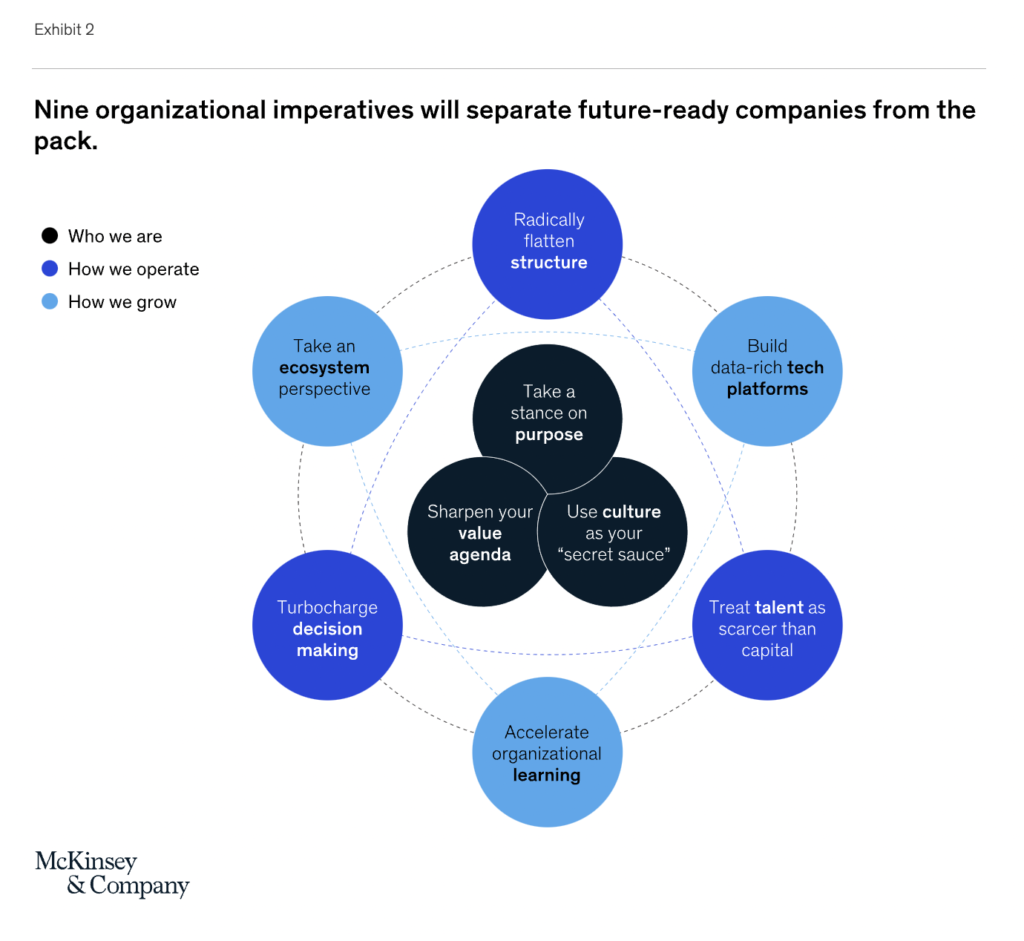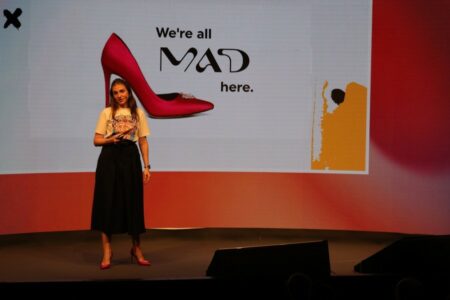Introduction
As the workforce reels from remote to hybrid work models, among additional social and economic changes, talent teams are becoming accountable for keeping people productive, healthy, happy, and safe. 2023 looks much like a roller coaster for HR professionals as a recent Insider survey points out further workplace challenges.
Managing investments in technology and people, cultivating a positive employee experience and strong culture, and transforming the HR function to be more digital, are challenges that may seem overwhelming to the modern CHRO; and that’s because all of the above is done while dealing with employee attraction, recruitment, and retention.
Setting the stage in HR for 2023 will be about transforming a siloed function into a more strategic one capable of attracting and retaining top talent. The first step every HR leader should take is to think and act strategically, maximizing technology while also collaborating with employer branding professionals to build the organization of the future.
Now that HR has a seat at the leadership table (finally), it’s the right time for professionals in this space to take action; any organization’s customer brand is just as important as its employer brand. ROI matters, but without dedicated people to make it happen, companies have zero chances of success.
The new HR function could help “build the organization of the future” now!
McKinsey’s recent research highlights three pillars business leaders can leverage to prepare their organizations for the future. The first is having a clear knowledge of what their company and purpose is; the second is related to operating with both simplicity and speed, and the third pillar links to growth, scalability, and the ability to innovate. Via the nine imperatives supporting the three core pillars, organizations can beat the odds and thrive.

Hiring and retaining top talent is one of the best ways of ensuring business success. However, it’s also one of the most difficult tasks an HR leader can take on. Cultural priorities such as Apple’s acute focus on user experience and Tesla’s efforts to innovate, fall under the talent brand & culture side of HR. Recruitment and retention goes to talent acquisition, and L&D professionals are accountable for managing career growth and professional development.
The downside of HR is that, in the absence of time, there’s no one collecting and putting the data together to build a cohesive culture. This is where employer branding comes into play. As a sub-function of HR (usually part of Talent Brand & Culture), employer branding professionals are tasked with designing and implementing a comprehensive EB strategy meant to attract and retain top talent in the long term. To build the organization of the future, HR teams should join forces with employer brand professionals to pin down what employees crave, cater to their needs, and develop an EVP around elements that makes an organization unique.
In 2023, HR’s focus should be on revitalizing exhausted teams, so that employee engagement and retention can increase. The old rules of HR management need to be abolished for the strategic mindset to take shape.
Out with the administrator, in with the HR strategist!
As a strategic partner, rather than an administrator, HR leaders can support and drive an organization’s goals. In simple terms, a strategic HR manager builds a bridge between the mission of C-suite executives (ROI, profit, customer success) and the work done by HR teams to achieve that mission (employee engagement, employee experience, employer branding, recruitment, retention).
For decades, HR teams have conducted operations in a silo, being completely disconnected from any decision-making and conversations happening at the leadership table. The friction created by the pandemic, followed by the Great Resignation, quiet quitting, massive layoffs phenomenon, and economic downturn, has forced companies to build better alignment across departments and teams.
From internal communications and administration to recruitment, training, onboarding programs, interviewing, and employer branding, the HR manager of 2023 plays a fundamental role in strengthening engagement, company culture, and business performance because they’re seen as a mentor, advisor, problem solver, and independent leader.
Gartner’s Top HR Trends & Priorities report for 2023 points out that leader & manager effectiveness is vital for business success, but just as important is employee experience, change management, and recruitment.
With 50% of HR managers expecting a rise in talent competition over the next six months, CHROs must consider adopting an open-source change strategy capable of supporting employees in times of uncertainty. Instead of informing employees about the changes happening, think about involving them in the process. Research shows that open-source change strategies are 14x times more likely to achieve change success.
We may not be CHROs, but we know how to blend employer branding into your HR strategies. Get in touch with us for understanding how to motivate your employees and transform your candidate pipeline!
HR clarifies the meaning of purpose and culture
Only 47% of HR leaders are making employee experience a top priority in 2023, and in the absence of honest values, a defined culture, and a clear purpose, 44% believe their companies lack compelling career paths. Another common challenge is recruiting, as 36% of HR managers believe their current strategies are not good enough to recruit qualified professionals.
How can HR help clarify the meaning of purpose and culture, so that their organizations can create significant value in the long term? It all begins with acknowledging that an improved employee experience leads to an improved bottom line. At the organizational level, HR must be encouraged to evolve so that it can become the “architect” of employee experience.
Exceptional business performance can only be achieved when the company culture has a strong, stable foundation. In 2023, we anticipate further changes as HR leaders will feel the pressure to keep costs under control but also define strategies to win the war for talent. To strengthen company identity, building a sense of purpose with a tangible impact should be a top priority.
An efficient employer brand strategy can help HR leaders build an honest employee value proposition (EVP). Companies with a transparent EVP are capable of decreasing annual employee turnover by almost 70%, boosting commitment among new hires by 30%.
HR leaders have the power to change recruitment
The HR leader of 2023 is a forward-thinker open to change. By determining what makes an employee purpose-driven, they will succeed at embedding recruitment attributes that draw in qualified candidates. With over 70% of the global workforce not hunting for a job, candidate sourcing and headhunting is increasing in complexity.
To tackle this challenge, HR managers should pay closer attention to the five recruitment metrics that can increase talent acquisition efficiency. These are:
- Time to fill: which refers to the length of time necessary to fill in a vacant role
- Quality of hire: which refers to the work performance of a new hire and contribution in the organization
- Time in process: which refers to the length of time candidates spend in each stage of the recruitment process
- Cost per hire: which refers to the investment (e.g. fees, sourcing costs, travel costs, relocation) a company has made in hiring
- Offer acceptance rate: which compares the number of active candidates who accepted a job offer vs. number of candidates who were presented with the job offer (but didn’t accept).
In terms of purpose-driven HR practices, in 2023 managers should deliberately take action and work towards ensuring alignment across every initiative that they take. By creating a unified approach to recruitment, HR leaders will build synergy, thus elevating their efforts to win the war for talent.
From performance management and talent acquisition to training and development programs, the focus should be on evaluating existing processes and developing new ones that can contribute to the well-being of the employer and the consumer brand. The strategic HR leader leverages technology to ensure cohesion between hiring practices, recruiting efforts, training initiatives, and onboarding programs. This way, HR practices will have a positive impact on employee performance, brand awareness, employee experience, engagement, retention, and company culture.
To attain continuous, high-quality retention and performance management, HR teams need to invest in systems and strategies that capture accurate feedback. The first step would be to answer the following questions:
- What do your employees care most about?
- What do they like/dislike about working in your company?
- What keeps employees motivated?
- What aspects of their job annoy them?
And it’s okay if you don’t know if there’s openness and curiosity to find out. To learn more about employee behaviors – both challenging and supporting – 2023 should be about HR working with employer brand managers to figure out what makes people stay or leave.
Recruitment has been conducted in silo for decades, and it will take more than 1 year for HR leaders to change the patented legacy processes everyone has gotten so used to. But as employer branding gains stability under the HR management umbrella, outdated systems will be abolished. The new model proposed by McKinsey, titled “Back to Human” gives us all some hope as the agile CHRO of 2023 is aware that winning the war for talent is all about transitioning from process to people.
“More than 98 percent of the CHROs we interviewed said they were thinking about how HR can shift from mechanistic skill and talent management to addressing the employee experience in a more targeted, dynamic way. This means engaging not just with contractual moments and employees’ safety but by taking a broader view of diversity, equity, and inclusion (DEI) and their sense of purpose.” (Source: McKinsey: ‘Back to human’: Why HR leaders want to focus on people again)
We may not be CHROs, but we know how to blend employer branding into your HR strategies. Get in touch with us for understanding how to motivate your employees and transform your candidate pipeline!






